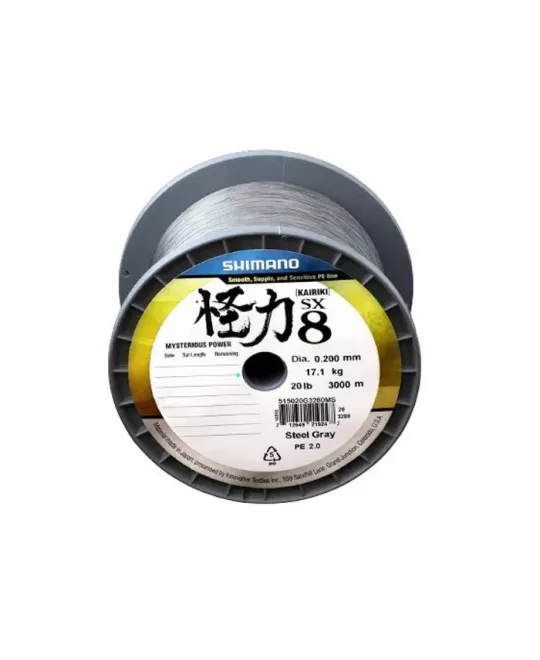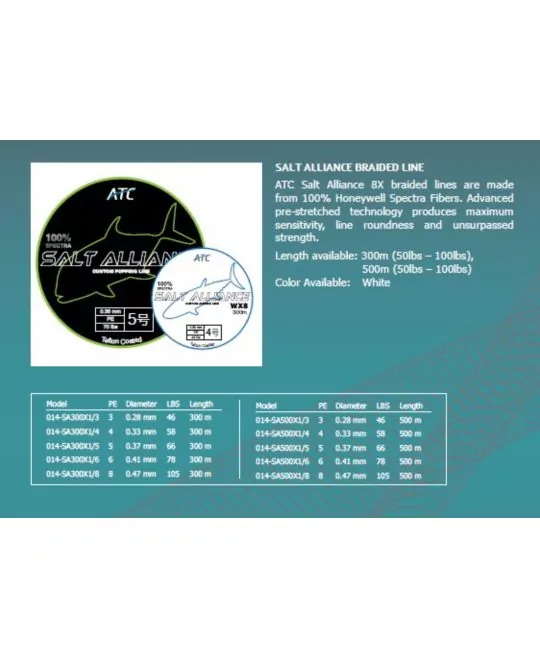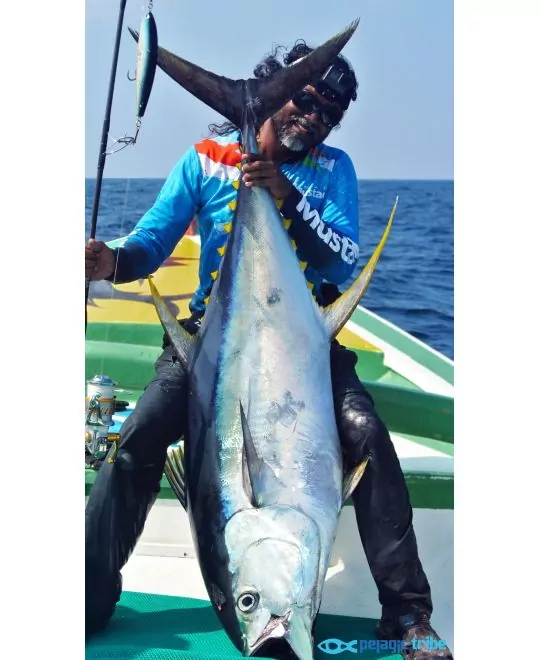| Sinking like ester |
| |
| Comparison of specific gravity by material |
 |
| |
| PITBULL G5 specific gravity design |
| |
 |
| |
| |
| A 5-strand structure combining a PE sheath structure with 'high density fluorine fiber' achieves high density. |
| |
 |
| |
| |
| Specific gravity comparison with normal PE |
| |
 |
| |
| |
| Light rig sinks |
| |
 |
| |
| Lightweight lures and rigs are difficult to sink when they encounter line resistance. Sinking PE allows the line to sink gradually into the water, making it easier to reach the bottom. |
| |
| |
 |
| |
| The line hits the water quickly after casting, preventing line fraying and allowing the lure to settle in. |
| |
| |
| Linear strength approaching that of regular PE |
| Extremely strong compared to nylon and fluoro! |
| Comparison of linear breaking strength by material for size 1.0 |
| |
 |
| |
| You can see the bite and bottom! High sensitivity! |
| |
 |
| |
| |
| What are the benefits of using the sinking PE line Pit Bull G5? |
| |
PE lines are currently used in a variety of fishing scenes because they are not only highly strong, but also have low elongation and high sensitivity. However, when actually out in the field, PE lines have some disadvantages. First , because of their light specific gravity (0.98), the line can be blown around by the wind in strong winds or when casting long distances, resulting in large line slack. Secondly, because of their light specific gravity, they sink slowly with light lures and rigs, and tend to leave the bottom when fishing while sensing the bottom. Both of these issues
have been improved with the high-density sinking PE, Pit Bull G5. |
| |
| |
| The presence of sinking PE in bass fishing |
| |
In recent years, PE lines have been used in various situations in bass fishing.
In bass fishing, where the ratio of soft baits is high compared to other fish species, lures and rigs are often sunk, making it one of the fishing styles that is well suited to high-density sinking PE lines.
Currently, PE lines are overwhelmingly stronger than the fluorocarbon lines that many anglers mainly use, so there are two ways to use them: by making the line thinner while keeping the same strength (poundage) to 'gain distance' or 'to make the line unnoticeable,' or by keeping the thickness (number) the same but increasing the strength to 'prevent it from being cut around cover' or 'to make it possible to fight forcefully.'
Of course, there is also the great advantage that it has less stretch than fluorocarbon or nylon, so it clearly conveys bottom changes and bites to your hand. |
| |
| |
| When sinking PE becomes a weapon in saltwater fishing |
| |
In saltwater fishing, where cast and retrieve are the main activities, it is often thought that high-density PE lines have few advantages, but in fact there are many.
In particular, the Pit Bull G5's ability to prevent line slack in strong winds and when casting long distances is a clear weapon.
With less line slack, you can trace the course you imagined, and since there is no need to reel in unnecessary line slack immediately after the lure hits the water, you can get a bite immediately after it hits the water and operate the lure smoothly from the start.
On the other hand, the conventional Pit Bull series is suitable for styles that deliberately create line slack and drift the lure, or for sending the lure to a spot by letting the line flow with the current, so by using them appropriately, you can now respond to a wider variety of situations.
In addition, in light salt fishing, such as bream games, soft baits are often used and fishing while feeling the bottom is often done, so there is no doubt that the Pit Bull G5 will be useful. |
| |
| |
| Use of line colors |
| |
| The Pit Bull G5 is available in stealthy steel gray and highly visible hi-vis orange. Choose steel gray for situations where you want to hide the presence of the line from the fish, and choose highly visible hi-vis orange for fall fishing or fishing where you can feel the bite by the movement of the line, making this a lineup that can be used in a wide range of situations. |
| |
| |
































































